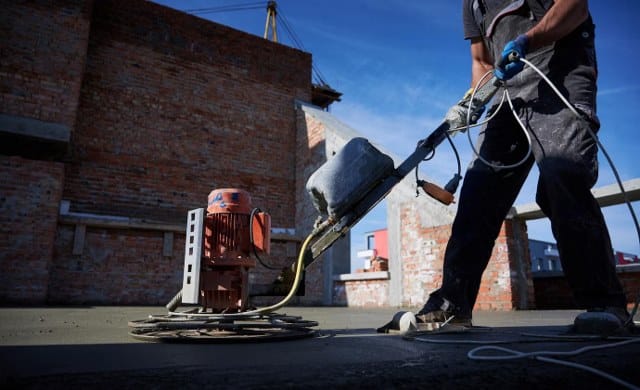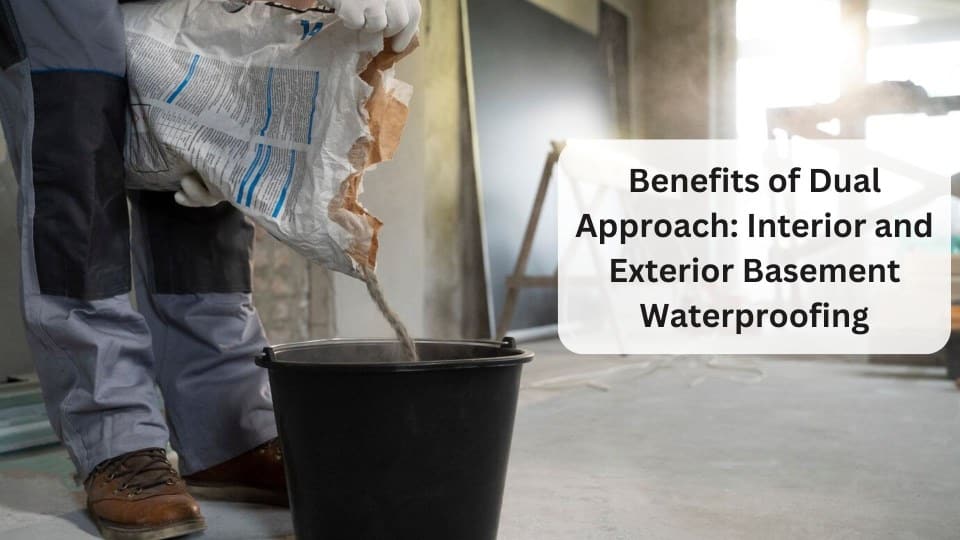You’ve recently made the biggest real estate purchase of your life and are preparing to assume occupancy of your new residence. Besides, you’ve had the property thoroughly inspected and have undertaken all required repairs.
But soon after moving into your dream home, you realize something is out of whack with the basement. Water keeps flooding the area even when conditions aren’t necessarily wet or humid.
Like any homeowner in your situation, you’re probably wondering if your property was constructed on swampland. Well, you could be right or wrong.
However, the more pertinent concern should be how to effectively address the problem of water seepage in your basement. And that’s where indoor and outdoor basement waterproofing comes in.
We’ve prepared a homeowner’s guide to waterproofing your basement from the inside and outside. The post shall distinguish between interior and exterior basement waterproofing, before highlighting the perks of implementing this dual approach.
Understanding Basement Waterproofing

Basement waterproofing is a home renovation project that utilizes special techniques and materials to prevent water from seeping into a house’s basement. The process typically entails applying a material containing a waterproof membrane between a building’s foundation and the soil, creating a robust barrier against water ingress.
Waterproofing your property’s basement isn’t something you’ll do every other year. But when it comes down to it, you’ll want to engage a professional.
Fortunately, it’s easy to find a basement waterproofing solution provider in Philadelphia that guarantees quality workmanship. In-depth research is all it takes to hone in on a company that fits your needs.
What Is Interior Basement Waterproofing?
Interior basement waterproofing seeks to prevent basement water seepage from the inside.
Typically, a home renovation specialist would apply a waterproof membrane to the basement. The material works by re-routing potential water leakage into your basement before it can flood the area and become problematic.
Preventing basement moisture ingress from the inside is usually the first step to building a resilient waterproof basement. It’s considered a less offensive alternative to exterior waterproofing.
What Is Exterior Basement Waterproofing?
Many homeowners will swiftly enlist basement waterproofing services upon detecting visible signs of water ingress. Fair enough!
However, you could do yourself one better by undertaking exterior basement waterproofing. This method entails proactively keeping water out of your home by waterproofing the basement walls from the outside.
Exterior basement waterproofing is usually more extensive since it involves proofing the walls from external aggressors. Besides, there’s a larger area to cover when waterproofing a basement from the outside.

Why Waterproof Your Basement From The Inside And Outside?
Implementing a dual basement waterproofing approach lets you synergize the perks of both interior and exterior waterproofing.
Benefits of Interior Basement Waterproofing
1. Prevents Underground Water Seepage
Interior basement waterproofing primarily manages moisture ingress due to underground water.
This is particularly effective for properties constructed in marshy lands.
2. Mitigates Structural Damages Due To Plumbing Leaks
Waterproofing your basement from the inside lets you control water damage due to plumbing faults.
Note that a significant portion of a house’s water lines run through the basement and foundation. However, these pipes can crack over time due to wear, corrosion, or the sheer pressure exerted by overlaying foundation material. When that happens, the leaking water can seep through the walls and flood your basement.
Most plumbing issues can be addressed effectively by hiring a competent plumber. But if the malfunctions cause flooding in the basement, you may want to also engage a basement renovation specialist. The technician will quickly probe the damage to determine the underlying cause before prescribing the right intervention.
3. Provides Long-Lasting Solution To Water Ingress
After waterproofing your basement, a basement specialist may install an interior basement drainage system under your house’s foundation to drive excess groundwater away from the property onto a sump pit. The sump pit would then discharge the collected water further from the house using a sump pump.
However, it’s imperative to address basement water ingress caused by issues with plumbing installations immediately. That way, you can prevent further damage to several other piping networks running through the basement, such as gas and sewer lines.

Benefits of Exterior Basement Waterproofing
1. Addresses Water Breach Before It Happens
The idea of waterproofing your basement is to prevent water from collecting on the floor and compromising your property’s structural integrity. Conversely, unlike interior waterproofing, which is primarily a reactionary solution, exterior waterproofing is a proactive intervention.
Waterproofing the basement from the outside prevents water from breaching your home’s foundation walls. This technique can help to minimize flood damage during the wet seasons. It can be especially useful for properties constructed in poorly drained areas.
2. Removes Problematic Soil Around A House’s Foundation
As previously hinted, exterior basement waterproofing tends to be more extensive.
The process usually starts by excavating the soil around your house’s foundation. Not only does this clear the area to allow for easy application of the waterproofing membrane, but it also reduces the pressure exerted by the surrounding soil on the foundation walls, further causing it to crack and encourage water ingress.
Due to its labor-intensive nature, exterior basement waterproofing is also considerably expensive. But if professionally done, you may never have to waterproof your property’s basement again.
Other Perks of Dual Basement Waterproofing
Waterproofing a basement from the inside and outside prevents mold growth in your basement.
Mold can leave unsightly marks and unpleasant odors on your basement walls. Worse yet, it could trigger or exacerbate upper respiratory infections. The effects of mold growth in the basement are more severe for households with asthmatic, elderly, or chronically ill individuals.
Adopting a dual basement waterproofing approach can reinforce your home’s structural foundation.
Note that in most buildings, the basement floor sits right above the foundation walls. So, any damage caused by moisture ingress would equally impact the foundation.
Lastly, waterproofing your basement from the inside and out improves your home’s living condition and resale value. Any prudent home buyer will inspect a property’s foundation before further negotiations.
Should You Undertake Dual Basement Waterproofing By Yourself?
Dual basement waterproofing is an intricate project that’s best left to home renovation experts. And who better to engage than Basement Waterproofing Scientists?
Basement Waterproofing Scientists is a renowned home renovation company with offices in Pennsylvania, New Jersey, and Delaware. We use advanced methodologies to provide in-depth foundation and basement repair services.
At Basement Waterproofing Scientists, we take pride in offering tailored home renovation services, as we believe that each property is unique and will only recommend the right intervention for your moisture-damaged basement upon establishing the underlying cause and extent of the water ingress.
Contact us today and be part of our growing community of satisfied clients.

Summary
Interior basement waterproofing addresses visible signs of water damage, while exterior waterproofing proactively prevents basement water ingress. To enjoy the best of both worlds, it’s best to have your property waterproofed inside and out.
The upfront cost of interior and exterior basement waterproofing may be undoubtedly inhibitive. However, considering the cumulative expenses incurred from addressing frequent water damage, a dual approach to basement waterproofing is worth every penny.


